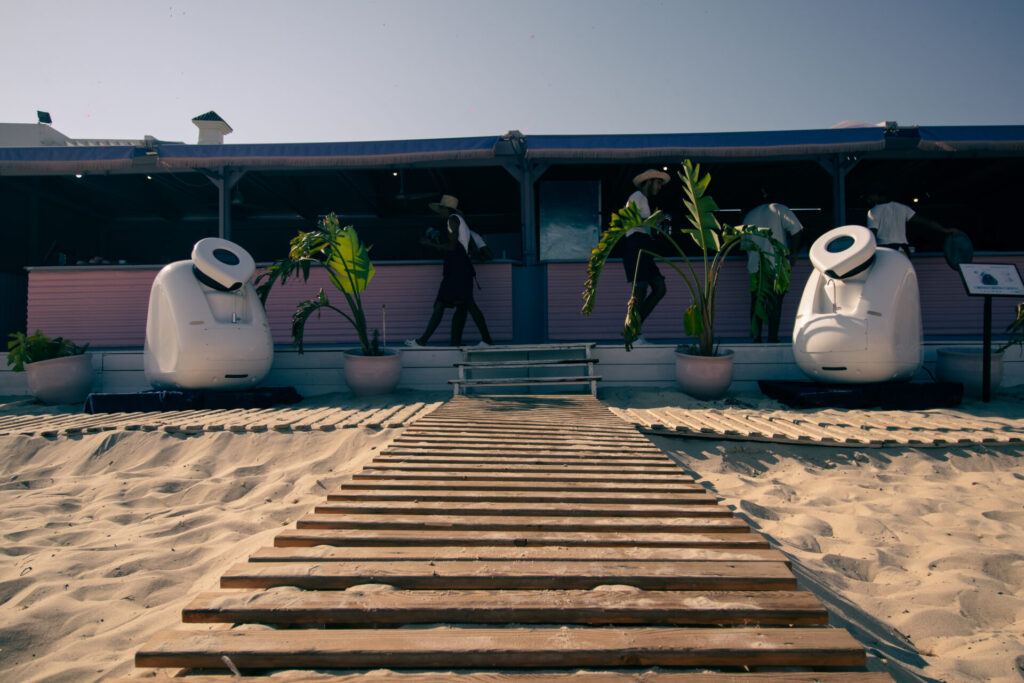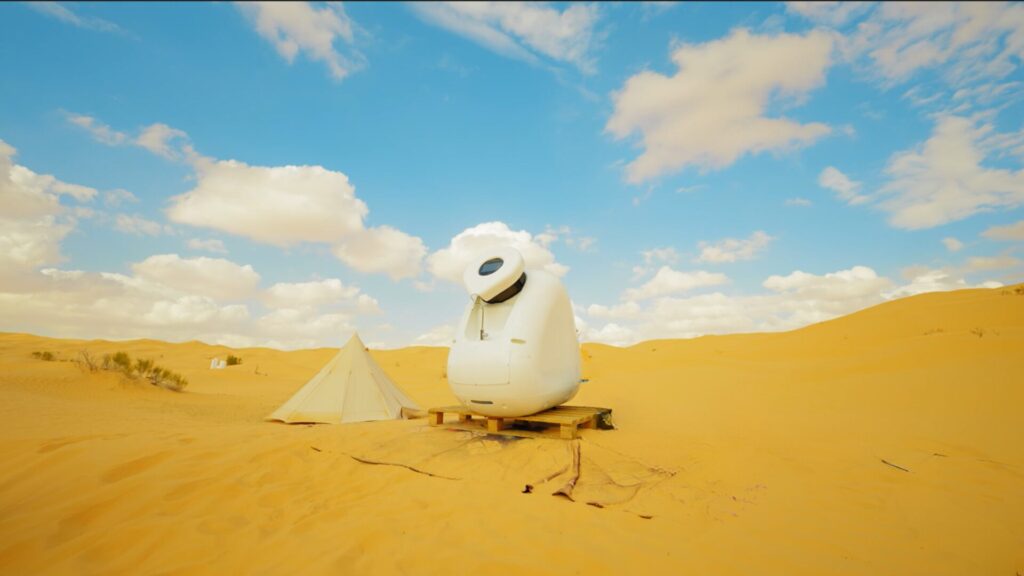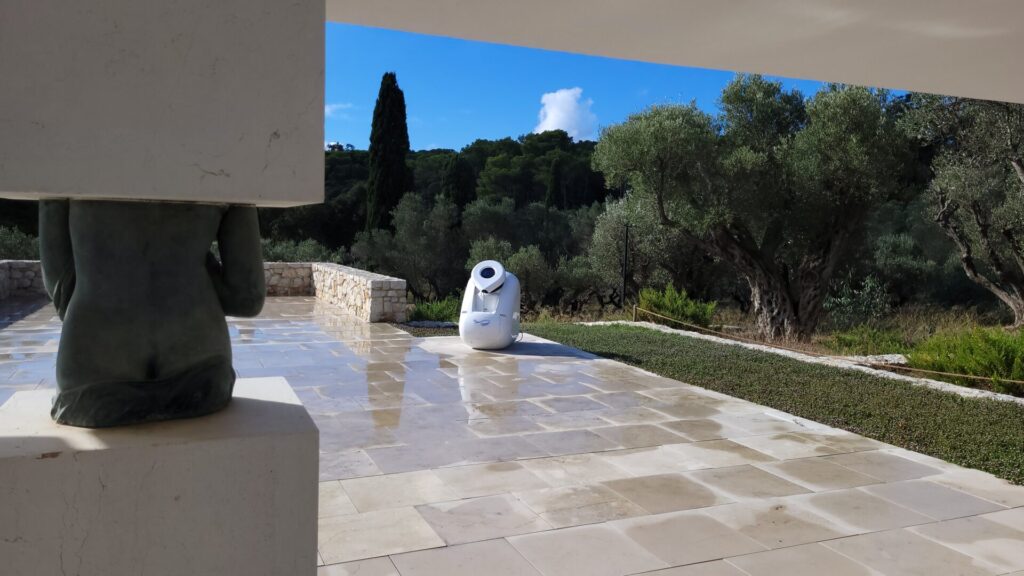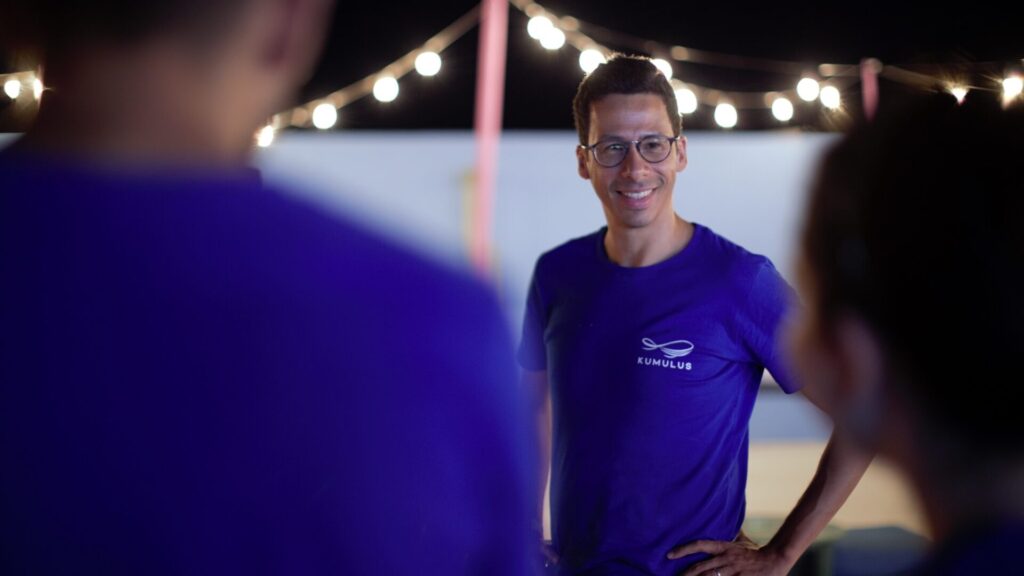It was having to lumber 100 litres of water into the Tunisian desert for a camping trip that got the founder of Kumulus Water, Iheb Triki thinking. For all that there was no water source for miles around – in one of the most arid places on Earth – still he woke early to find his tent and car covered in dew. Couldn’t that be captured and drunk?
Triki was working as a private equity investor in renewable energy at the time, but asked his friend Mohamed Ali Abid, an engineer specialising in motor cooling systems. A few months later, they had built the prototype of a device – about the size of a washing-machine – that pulls around 30 litres of water a day from the atmosphere, even when local conditions are extremely dry.
Three years later and, in part thanks to grant assistance from the French and Tunisian Governments, Kumulus Water – the company the duo founded – is rolling out its fully mobile devices to any place where there’s a high demand for and yet poor supply of potable water, starting with factories and schools across southern France, northern Africa and the Middle East. Twelve of the 17 most water-stressed countries in the world are in the MENA region.

‘The Kumulus philosophy is that we want to champion water autonomy – to empower people to be able to live wherever they want because water is there,’ Triki explains. ‘Water supply is freedom. Provide water and you also provide food – because you need one to grow the other – and, in the longer term, hydrogen as a power source. Of course there are many remote parts of the world without water. But it’s remarkable that there are also major cities – Riyadh, for example – where there’s no real water supply’.
Kumulus’ Unique Advantage
Triki notes that the idea behind the Kumulus device is well-established: that water condenses from air as the temperature drops is a property of thermo-dynamics. ‘Everyone has seen this happen with the dripping from their air-con, for example,’ he says. And, indeed, three or four other developers around the world seem to have had the same idea at roughly the same time, no doubt likewise inspired by the fact that other proposed water-gathering tech to date has depended on drawing from wells, or the desalination of sea-water – both don’t solve the challenge of then transporting water to where it’s needed, or, in the latter’s case, the hugely energy-intensive processes.

But Kumulus aims to be the market leader as a consequence of being the first to be both fully CE certified (the European Union’s safety, health and environmental requirement) – achieving that was a coup since ‘largely regulators around the world just haven’t started looking at water generation tech yet because it’s too new,’ Triki notes – and to mineralise the water as it’s harvested. Triki argues that is essential both for reasons of health, but also for taste. That’s crucial to encourage people to switch from the main source of drinking water in those parts of the world that Kumulus is targeting: bottled water, wasteful for both its packaging and transportation.
This, Triki argues, is clearly unsustainable and all the more so given rising demand for potable water from people – for some of whom water is also essential to their livelihoods – but rising demand from agriculture and industry too. If water was treated like the invaluable resource that it is – ‘go without water for a few days and people start to literally go crazy,’ he points out – and the cost of supply was recognised, it would be priced much, much higher than it is. Yet governments around the world are reluctant to tackle this head on for fear of losing the backing of the populace.
‘We’d argue that it’s not an overstatement to say that globally we’re facing a water crisis. What’s been a challenge for decades is increasingly critical, and many more can expect to face severe water shortage for some part of the year, and that’s in the world’s advanced economies too’
John Garrett, Senior Policy Analyst at Wateraid
‘We have to find the political will to address this [situation] because while people will pay for bottled water – and in those parts of the world where it’s the only real option prices are hugely inflated – our habit is to think of tap water as free,’ says Triki, who’s now in the process of developing a patented AI analysis system that will allow Kumulus machines to speak to one another in order to fine-tune efficiency in water production.
‘That means there’s a lack of outside investment, and that even water companies are limited in their scope to improve old and inefficient infrastructure, and so the wastage goes on. Water shortage has become a problem everyone knows about but everyone shies away from addressing.’
John Garrett, senior policy analyst at the campaign and research organisation Wateraid, certainly agrees. With, according to the World Economic Forum, an estimated 1.6 billion people around the world are expected to lack drinking water by the end of the decade, ‘we’d argue that it’s not an overstatement to say that globally we’re facing a water crisis,’ he says. “What’s been a challenge for decades is increasingly critical, and many more can expect to face severe water shortage for some part of the year, and that’s in the world’s advanced economies too”.

He cites the experience of Capetown, which faced three years of severe drought in the run up to 2018, and has since launched multiple initiatives to stop the city running completely dry, among them replacing 50km of pipes and plans to naturally filter storm basin run-off and feed it back into the groundwater. City authorities claim to have already reduced the population’s water consumption by 55 per cent through educational campaigns alone.
‘When thing go wrong [like that] it tends to concentrate minds and gets the sector making the necessary changes. And where water is a strong political priority you can see big changes too,’ he says, more hopefully. ‘But in the end it’s not just about plugging gaps in infrastructure. It’s about providing consumers with the incentives to change their water habits.’
Indeed, South Africa is a target market for Kumulus over coming months, alongside California and the Greek Islands. It’s not just scaling up in terms of geographical reach either. While the company sees an advantage in its current machine precisely because it’s mobile and can be installed anywhere, in multiples if required – water distribution is as much part of the global challenge as water availability, argues Triki – nonetheless Kumulus is now working on a two year project to develop a shipping container-sized machine. Dubbed the Titan, it might prove capable of generating 1000 litres a day, enough that Kumulus envisages it being installed on roof-tops to supply entire apartment blocks.
Then, says Triki, it won’t just be the bottled water market that Kumulus Water aims to challenge, but tap water supply too, especially wherever it’s of poor quality. In the long run, he says, Kumulus could be to water as photovoltaic panels are to energy supply: a technology-led paradigm shift not just for more sustainable living, but for sustained living in more faraway corners of the world.










